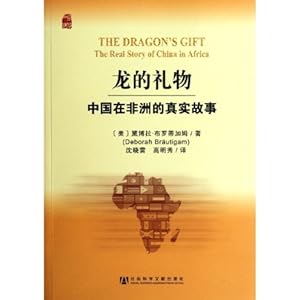We anticipate the publication this month of a new report from China on
its foreign aid program. In the meantime, we have yet another
media-report based study with
outlandish numbers. In a recent op-ed in
the Wall Street Journal researchers
at Rand gave the highlights of their two year "research project" on
"Chinese aid". I hoped this would not attract much attention, but people
are starting to send it to me for comment ... so here goes.
There are so many things wrong in the
WSJ op-ed that I hardly know where to begin. Most importantly, the study followed the same deeply flawed methodology (and indeed, used the data from) the notorious 2009
Congressional Research Service study that relied on a group of students at the NYU Warner School to collect media reports on
any story of direct investment, mergers and acquisitions, trade finance, bank loans, equity funds, and so on, that appeared to have anything to do with the Chinese government. Adding all of this together, and without apparently investing much in checking the media reports for accuracy, or thinking much about why the purchase of an oil well should be counted as "aid", Rand has come up with some
truly preposterous figures. According to Rand, China is budgeting more than twice as much on aid as on defense: $189 billion in 2011 alone.
Can these researchers be serious?
This report was done, in part, for the US Department of Defense. I have to wonder what they will do with these
ridiculous figures. Will DOD relax, because a generous China appears to be spreading aid around the world rather than building its military? Or will they demand a bigger share of our own aid budget in order to counter all of this nefarious "Chinese aid"?
For the record, China does have "official development assistance" that looks much like ours, as I've tried to explain across several chapters of
The Dragon's Gift (apparently it's not in the library at Rand...). Below are the actual external assistance expenditure budgets for the last decade (source:
China Statistical Yearbook). This includes grants and zero-interest loans, and any subsidy provided to make the relatively small set of concessional foreign aid loans [
优惠贷款] provided by China Eximbank as one of its many loan instruments, concessional enough to qualify as official development assistance (ODA). In recent years, however, China Eximbank has apparently done all of the subsidies through its own profits, cross-subsidizing these loans and not drawing on the budget.
So in 2011, China allocated direct expenditures of about $2.5 billion on official aid (grants and zero-interest loans; see Table 1 below)
. These figures cover all the short term training courses, the youth volunteer program, military aid, some turn-key projects funded by grants and zero-interest loans (like stadiums, hospitals, schools, agro-technical demonstration centers, government buildings) but does not include the concessional loans. According to official figures from the State Council, between 1960 and
the end of 2009, "China had provided a total of 256.29
billion yuan ($37.7 billion) in aid to foreign countries, including 106.2 billion yuan ($15.6 billion)
in grants, 76.54 billion yuan ($11.3 billion) in interest-free loans and 73.55 billion
yuan ($10.8 billion) in concessional loans" [exchange rate is for 2009]."
Concessional foreign aid loans have been growing rapidly. However, in 2011, by my estimates, China Eximbank committed no more than $8 billion in concessional foreign aid loans, and disbursed much less . (We'll see how close I was when the official figures are released). This would mean at most, a total of $10.5 billion in official development aid commitments in 2011,
not $189 billion. Preferential export credits are not official development aid, and would be additional to this, but they are unlikely to be higher than $8 billion in 2011. Finally, most of China Eximbank's export credits -- the bulk of their funding flows --
are not subsidized and not concessional.
For more on this, see The Dragon's Gift, my book on Chinese aid, or two papers I wrote in 2011: "
Aid with Chinese Characteristics" and "
Chinese Development Aid to Africa: What Where Why and How Much?".
Table 1: China's External Assistance Expenditures, Annual (billion)
(exchange rate is the IMF annual rate)
|
2000 |
2001 |
2002 |
2003 |
2004 |
2005 |
2006 |
2007 |
2008 |
2009 |
2010 |
2011 |
| RMB |
4.6 |
4.7 |
5.0 |
5.2 |
6.1 |
7.4 |
8.2 |
11.2 |
12.6 |
13.3 |
13.6 |
16.0 |
| US$ |
.55 |
.57 |
.60 |
.63 |
.73 |
.91 |
1.03 |
1.47 |
1.87 |
1.95 |
2.00 |
2.46 |












